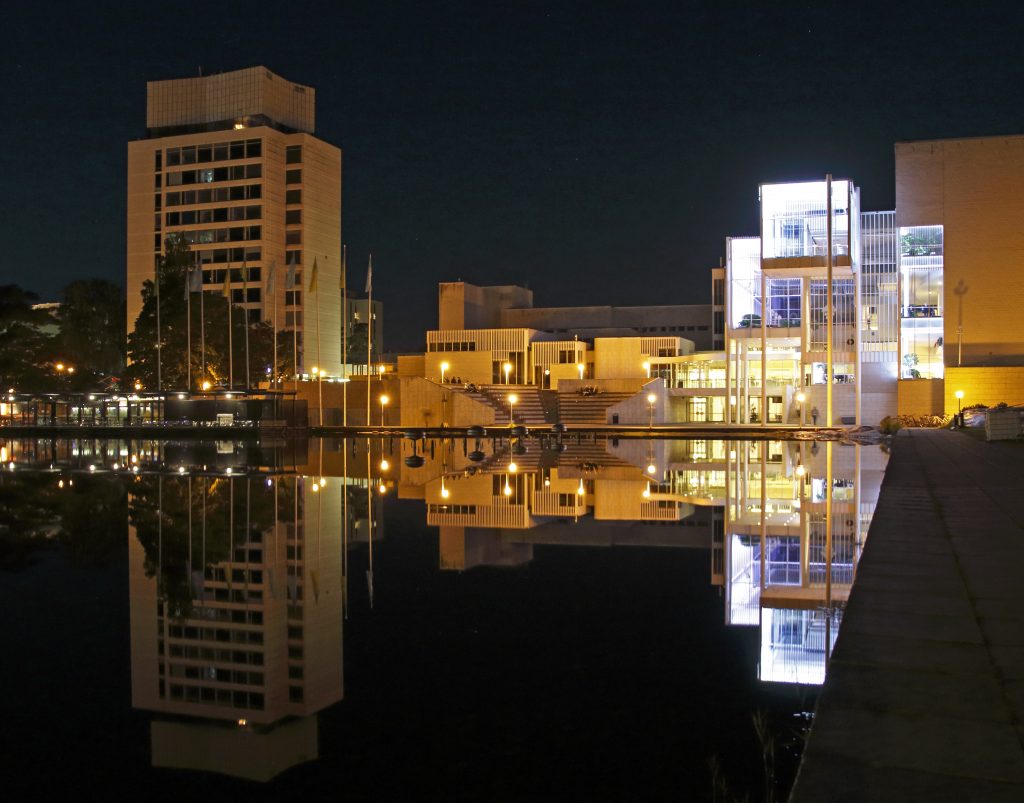Espoo, in Finland, was one of 12 cities to receive the UNESCO Learning City Award at the second International Conference on Learning Cities in Mexico in 2015. Annica Isacsson and Annika Forstén explain what makes Espoo special

Espoo cultural centre and tower in Tapiola
In 2015, UNESCO recognized the Finnish city of Espoo for the outstanding progress it had made in implementing the ‘Key Features of Learning Cities’ since the first International Conference on Learning Cities in 2013. The Key Features describe a learning city as one that effectively mobilizes, creates and reinforces individual empowerment and social cohesion, and economic and cultural prosperity, in addition to sustainable development. In fact, the United Nations has invited Espoo to become a pioneer of sustainable development by attaining the UN’s Sustainable Development Goals (SDGs) by 2025, five years ahead of schedule.
Espoo aims to ensure that all citizens can fulfill their potential, succeed in the uncertain world of the future and participate in the development of their local communities. Learning, creativity and innovation are fostered from an early age. For example, in 2019, Tapiola Sinfonietta, the city’s orchestra, invited all expectant parents in the city to its regular concerts so that their children could experience the positive influence of music while still in the womb. And Espoo’s systematic approach to collaboration between artists and schools has been extended to early education centres, giving all children the opportunity to interact with professional artists and foster creative minds.
Espoo is the second-largest city in Finland. Around half the population have a university degree and 20 per cent are under 15 years of age. In Espoo, learning is valued, and the idea that learning grows through collaboration is put into practice, at every age and level. In the latest poll related to pre-education, 90 per cent of respondents said they were very content with Espoo’s pre-educational services.
Besides the formal education system, the city aims to provide possibilities for learning, everywhere, for all. Espoo City Library, recently rated the best in the world, reaches all city districts through its network of small libraries, self-service libraries, large district libraries located in shopping centres, and mobile library services, such as library buses. With its ukulele clubs, gender-neutral toilets and library dogs, to name only a few citizen-oriented services, the library has been able to develop into the most popular public service of Espoo.
The city’s sports services have established small sports containers on areas with fewer built sports venues – thus opening up the opportunity for a healthy lifestyle to all. Secondary schools end earlier on Wednesdays to give pupils the opportunity to pursue a hobby. Collaborative workspaces – known as ‘makerspaces’ – can be found in schools, libraries and other public and private facilities.
In another innovation, vocational education provider Omnia a built a touring AI (artificial intelligence) truck with Aalto University (a multidisciplinary university with its main campus in Espoo) and private partners to bring AI to all Espoo’s citizens. Senior mentors promote AI as a future skill through their own networks.
This activity is supported by formal commitments to sustainability. For example, Aalto University has signed the international SDG Accord through which it commits to advance the SDGs through teaching, research, innovation activities, and campus development. The accord is a collective response by universities and colleges to strengthen the role of universities in achieving the goals of the 2030 Agenda for Sustainable Development. Dozens of educational institutions around the world have signed the accord.
The impact of all of this is evident in the feedback of learners. A survey conducted by the Finnish Innovation Fund in 2019 found that lifelong learning is regarded by Finns as a fundamental right. It raises positive emotions, such as curiosity, engagement, hope, calmness, pleasure, excitement, satisfaction, joy and happiness, among other things. The joy of learning, according to the survey, can be felt when watching a cooking video, filling in an official form, reading a book, visiting a museum or working. As one respondent said, ´I think my whole life is about learning’.
The mission of the UNESCO Global Network of Learning Cities is to share inspiration, know-how, learning and visibility of best practice among its member cities. The network supports the achievement of all 17 SDGs, in particular SDG 4 (‘Ensure inclusive and equitable quality education and promote lifelong learning opportunities for all’) and SDG 11 (‘Make cities and human settlements inclusive, safe, resilient and sustainable’). The example of Espoo shows just how effective cities can be in fostering inclusive, collaborative and sustainable living. I hope many other cities will follow our example.
Annica Isacsson is Senior Visiting Researcher at UIL, and Research Manager/Head of RDi at Haaga-Helia University of Applied Sciences/School of Vocational Teacher Education. Annika Forstén is Senior Planning Officer, Education and Cultural Services, Espoo
